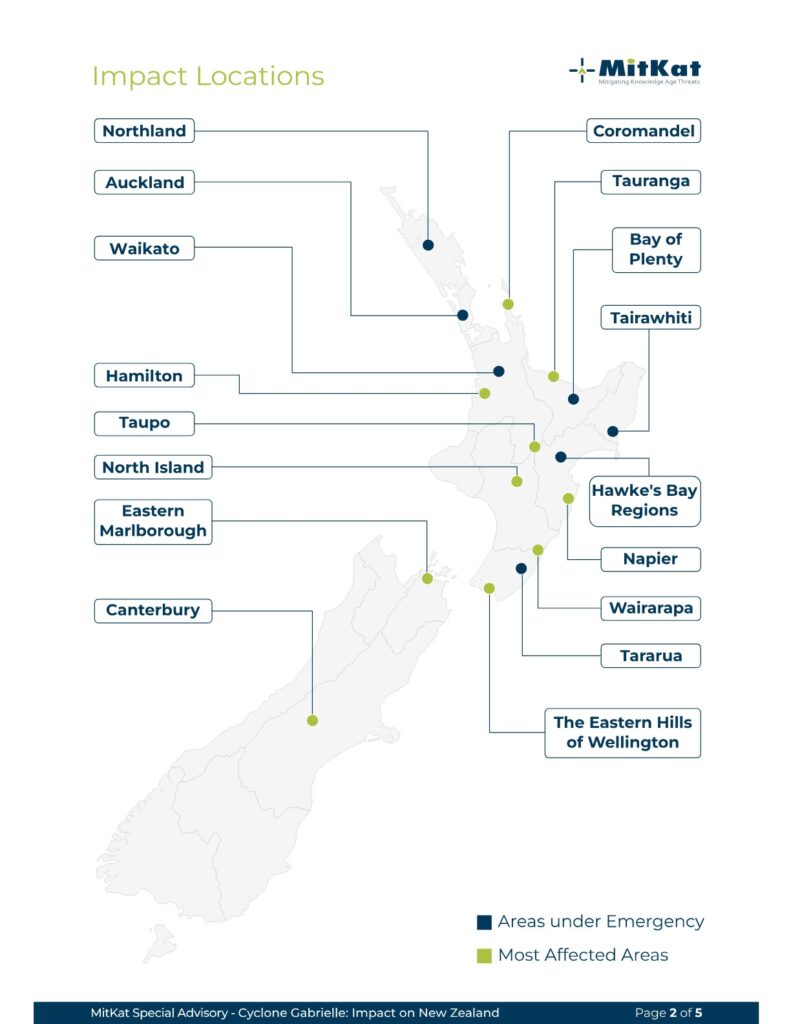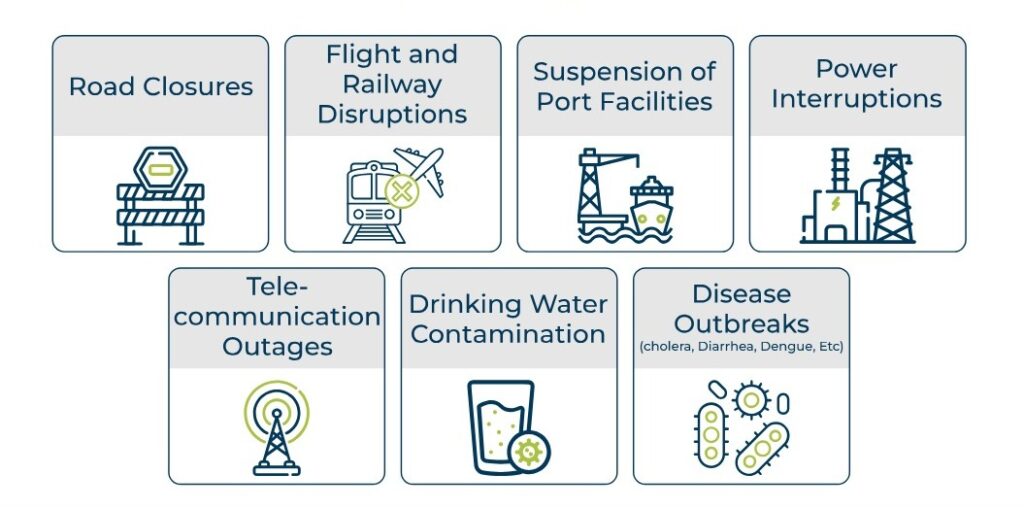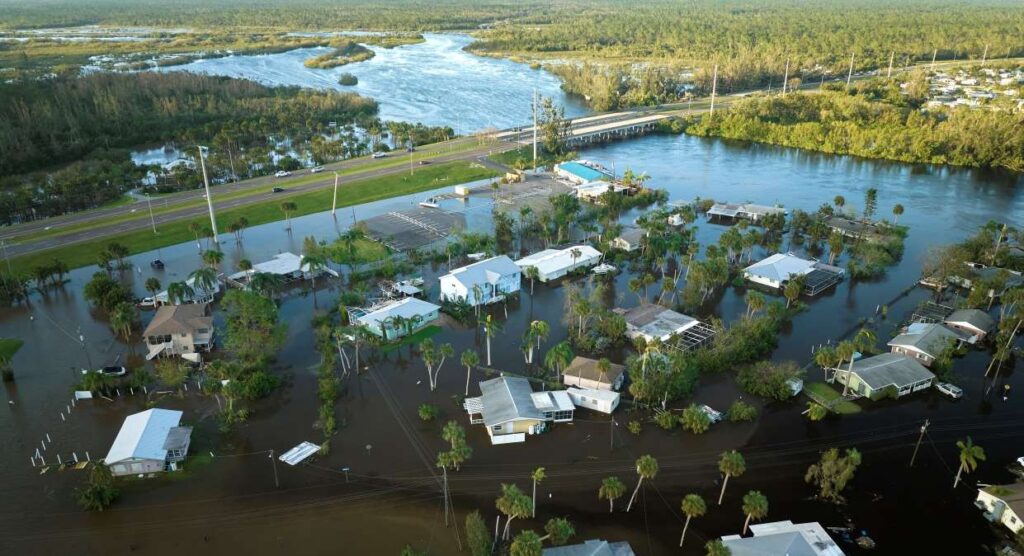Cyclone Gabrielle formed off the northeastern coast of Australia in the Coral Sea on 08 February and on 14 February, the New Zealand government declared National State of Emergency in response to widespread damage. At present, the weather event is being treated as a category four emergency (the most severe level). Flood and landslides have cut off many settlements across the country including areas near Auckland, washed off bridges and homes, and caused heavy infrastructural loss. About 140,000 people are still without power across the North Island. Five deaths and over 10,000 displacement cases have been reported until Thursday morning (16 February).
Disruptions to business operations and supply chains are likely to continue as more rainfall is predicted over parts of North and South Islands. Rescue operations are also getting delayed due to ongoing flooding and landslides. Prime Minister Chris Hipkins has pledged NZD 11.5 million (USD 7.3 million) in aid so far. With Air New Zealand cancelling over 500 flights, both inbound and international passengers have been heavily affected.


Disruptions that are likely to continue in the upcoming week –

Recommendations
- Remain vigilant of live weather warnings at – https : //www.metservice.com/warnings/home and live road traffic updates at -https://www.journeys.nzta.govt.nz/traffic/
- It is advised to prepare for flood and landslides in adherence to government approved measures. Details can be availed at – https://getready.govt.nz/en/
- Stock up on essentials such as medications, dry food, sanitizer, etc.
- In case the option of filtered water is not available, use few drops of chlorine to the water before drinking.
- Be cautious of frayed wires, electrical lines, and tree limbs.
- Avoid travelling in the vicinity of riverbanks.
- In case driving to low-lying areas, avoid hard accelerations and brakes; maintain a steady momentum and do not restart engine while the vehicle is stalled in water. For further safe driving guidelines, refer to MitKat’s Special Advisory on Safety Measures for Vehicles During Heavy Rainfall.
- Keep an extra set of fresh clothes in office.
- As power outage is likely to continue, advised to ensure that emergency lights and torches are working properly. Keep few extra cells as well.
- Adhere by evacuation orders or other guidelines as issued by local authorities.
- Turn off power and gas connections before evacuating residential area.
For Business Organizations
- Move essential items (important documents, machines, etc) to an upper floor.
- Keep doors and windows closed so that floodwaters or wind do not pose any damage to the interiors.
- Protect windows using adhesive tape to prevent glass doors or windows from shattering amid strong gusts.
- Advised to undertake flexible working arrangements and have adequate power backups ready.
- Turn off power during thunderstorms in order to avoid short circuit.
- Install mosquito repellents and arrange for sanitizer dispensers.

Recommendations
- National Emergency Number – 111
- Auckland – 0800 22 22 00
- Northland –
- Whangarei: 0800 932 463
- Far North: 0800 920 029
- Kaipara: 09 439 1111. To report damage to roads or log other service requests 0800 727 059.
- Tairāwhiti – 0800 653 800
- Coromandel – 0800 568 273
- For registering a person with safety concerns, refer to – New Zealand Police Inquiry Form.



